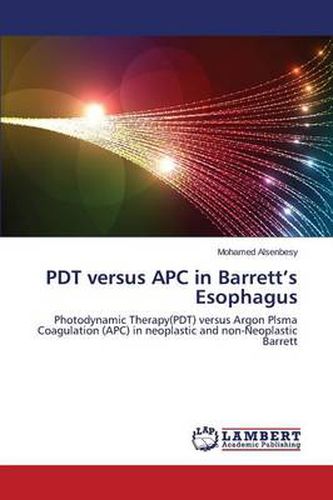Readings Newsletter
Become a Readings Member to make your shopping experience even easier.
Sign in or sign up for free!
You’re not far away from qualifying for FREE standard shipping within Australia
You’ve qualified for FREE standard shipping within Australia
The cart is loading…






This title is printed to order. This book may have been self-published. If so, we cannot guarantee the quality of the content. In the main most books will have gone through the editing process however some may not. We therefore suggest that you be aware of this before ordering this book. If in doubt check either the author or publisher’s details as we are unable to accept any returns unless they are faulty. Please contact us if you have any questions.
The aim of endoscopic ablation in the lower third of the esophagus is to eliminate the intestinal metaplasia and hence the risk of developing adenocarcinoma. Different methods have been advocated but, to date, none of them has been shown to be the standard. We used different methods according to individualized selection criteria. We support the use of PDT for patients with grade-4 IPN. Supplementary methods for the rest of Barrett are of particular value. EMR is suitable for elevated lesion with suspicion of IPN, as it provides considerable material for exact histopathological examination. APC is needed for the elimination of the residual islands of Barrett’s epithelium. APC alone could be enough for grade-3 IPN within Barrett’s muosa less than 5 cm in length, as it showed esophageal stricture when used for longer lesions. Endoscopic ablation therapy is highly effective in eradicating intraepithelial neoplasia (IPN) within Barrett’s esophagus. The success in totally eradicating the metaplastic epithelium was much lower. Long-term follow-up is inevitable to prove the effectiveness of ablation therapy in reducing the incidence of adenocarcinoma of the esophagus.
$9.00 standard shipping within Australia
FREE standard shipping within Australia for orders over $100.00
Express & International shipping calculated at checkout
This title is printed to order. This book may have been self-published. If so, we cannot guarantee the quality of the content. In the main most books will have gone through the editing process however some may not. We therefore suggest that you be aware of this before ordering this book. If in doubt check either the author or publisher’s details as we are unable to accept any returns unless they are faulty. Please contact us if you have any questions.
The aim of endoscopic ablation in the lower third of the esophagus is to eliminate the intestinal metaplasia and hence the risk of developing adenocarcinoma. Different methods have been advocated but, to date, none of them has been shown to be the standard. We used different methods according to individualized selection criteria. We support the use of PDT for patients with grade-4 IPN. Supplementary methods for the rest of Barrett are of particular value. EMR is suitable for elevated lesion with suspicion of IPN, as it provides considerable material for exact histopathological examination. APC is needed for the elimination of the residual islands of Barrett’s epithelium. APC alone could be enough for grade-3 IPN within Barrett’s muosa less than 5 cm in length, as it showed esophageal stricture when used for longer lesions. Endoscopic ablation therapy is highly effective in eradicating intraepithelial neoplasia (IPN) within Barrett’s esophagus. The success in totally eradicating the metaplastic epithelium was much lower. Long-term follow-up is inevitable to prove the effectiveness of ablation therapy in reducing the incidence of adenocarcinoma of the esophagus.